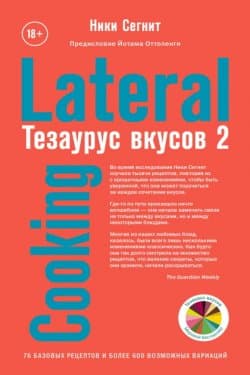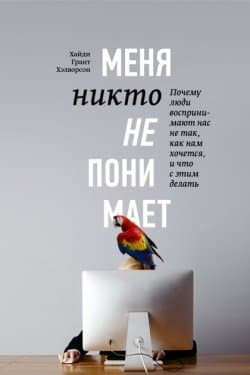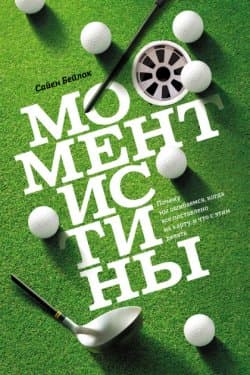Момент истины. Почему мы ошибаемся, когда все поставлено на карту, и что с этим делать? - Сайен Бейлок (2010)
-
Год:2010
-
Название:Момент истины. Почему мы ошибаемся, когда все поставлено на карту, и что с этим делать?
-
Автор:
-
Жанр:
-
Оригинал:Английский
-
Язык:Русский
-
Перевел:Михаил Попов
-
Издательство:Манн, Иванов и Фербер (МИФ)
-
Страниц:160
-
ISBN:978-5-00057-724-0
-
Рейтинг:
-
Ваша оценка:
Момент истины. Почему мы ошибаемся, когда все поставлено на карту, и что с этим делать? - Сайен Бейлок читать онлайн бесплатно полную версию книги
76. Больше прочесть о гендерных различиях в привязке к именам можно здесь: Пинкер С. Субстанция мышления: язык как окно в человеческую природу. М. : КД Либроком, 2013.
77. Murphy M. C., Steele C. M., Gross J. J. Signaling threat: how situational cues affect women in math, science, and engineering settings // Psychological Science, 2007. Vol. 18. Pp. 879–885.
78. Steele C. M. A threat in the air: How stereotypes shape intellectual identity and performance // American Psychologist, 1997. Vol. 6. Pp. 613–629.
79. Tyre P. The Trouble with Boys: A Surprising Report Card on Our Sons, Their Problems at School, and What Parents and Educators Must Do. New York: Three Rivers Press, 2008.
80. College Board, Summary Reports: 2007: National Report //
Глава 5
81. Hembree R. The nature, effects, and relief of mathematics anxiety // Journal for Research in Mathematics Education, 1990. Vol. 21. Pp. 33–46. См. также: Beilock S. L., Gunderson L. A., Ramirez G., Levine S. C. Female teachers’ math anxiety affects girls’ math achievement // Proceedings of the National Academy of Sciences, USA, 2010. Vol. 107. Pp. 1860–1863.
82. Alexander L., Martray C. The development of an abbreviated version of the Mathematics Anxiety Rating Scale // Measurement and Evaluation in Counseling and Development, 1989. Vol. 22. Pp. 143–150. Перепечатано с разрешения.
83. Foundations for Success: The Final Report of the National Mathematics Advisory Panel, 2008 //
84. Ashcraft M. H., Kirk E. P. The relationships among working memory, math anxiety, and performance // Journal of Experimental Psychology: General, 2001. Vol. 130. Pp. 224–237.
85. Steele C. M., Aronson J. Stereotype threat and the intellectual test performance of African-Americans // Journal of Personality and Social Psychology, 1995. Vol. 69. Pp. 797–811.
86. Aronson J. et al. When white men can’t do math: Necessary and sufficient factors in stereotype threat // Journal of Experimental Social Psychology, 1999. Vol. 35. Pp. 29–46.
87. Smith E. E., Jonides J. Storage and executive processes in the frontal lobes // Science, 1999. Vol. 283. Pp. 1657–1661.
88. Rothmayr C. et al. Dissociation of neural correlates of verbal and non-verbal visual working memory with different delays // Behavioral and Brain Functions, 2007. Vol. 3. P. 56. Воспроизведено с разрешения.
89. Beilock S. L., Rydell R. J., McConnell A. R. Stereotype threat and working memory: Mechanisms, alleviation, and spill over // Journal of Experimental Psychology: General, 2007. Vol. 136. Pp. 256–276.
90. DeCaro M. S., Rotar K. E., Kendra M. S., Beilock S. L. Diagnosing and alleviating the impact of performance pressure on mathematical problem solving // Quarterly Journal of Experimental Psychology: Human Experimental Psychology, 2010 //
91. Wang J. et al. Perfusion functional MRI reveals cerebral blood flow pattern under psychological stress // PNAS, 2005. Vol. 102. Pp. 17804–17809.
92. Beilock S. L., Carr T. H. When high-powered people fail: Working memory and ‘choking under pressure’ in math // Psychological Science, 2005. Vol. 16. Pp. 101–105.
93. Gimmig D., Huguet P., Caverni J., Cury F. Choking under pressure and working memory capacity: When performance pressure reduces fluid intelligence // Psychonomic Bulletin & Review, 2005. Vol. 13. Pp. 1005–1010.
94. Raven J. C., Raven J. E., Court J. H. Progressive Matrices. Oxford: Oxford Psychologists Press, 1998. См. также:
 Поступай как женщина, думай как мужчина. Почему мужчины любят, но не женятся, и другие секреты сильного пола Стив Харви
Поступай как женщина, думай как мужчина. Почему мужчины любят, но не женятся, и другие секреты сильного пола Стив Харви
 Компаньон Кристина Гедони
Компаньон Кристина Гедони
 Тезаурус вкусов 2. Lateral Cooking Ники Сегнит
Тезаурус вкусов 2. Lateral Cooking Ники Сегнит
 Правила развития мозга вашего ребенка. Что нужно малышу от 0 до 5 лет, чтобы он вырос умным и счастливым Джон Медина
Правила развития мозга вашего ребенка. Что нужно малышу от 0 до 5 лет, чтобы он вырос умным и счастливым Джон Медина
 Меня никто не понимает! Почему люди воспринимают нас не так, как нам хочется, и что с этим делать Хайди Грант Хэлворсон
Меня никто не понимает! Почему люди воспринимают нас не так, как нам хочется, и что с этим делать Хайди Грант Хэлворсон
 Здоровое питание в вопросах и ответах Патриция Барнс-Сварни, Томас Сварни
Здоровое питание в вопросах и ответах Патриция Барнс-Сварни, Томас Сварни

 Пир теней
Пир теней  Князь во все времена
Князь во все времена  Когда порвется нить
Когда порвется нить  Пока я здесь
Пока я здесь 



